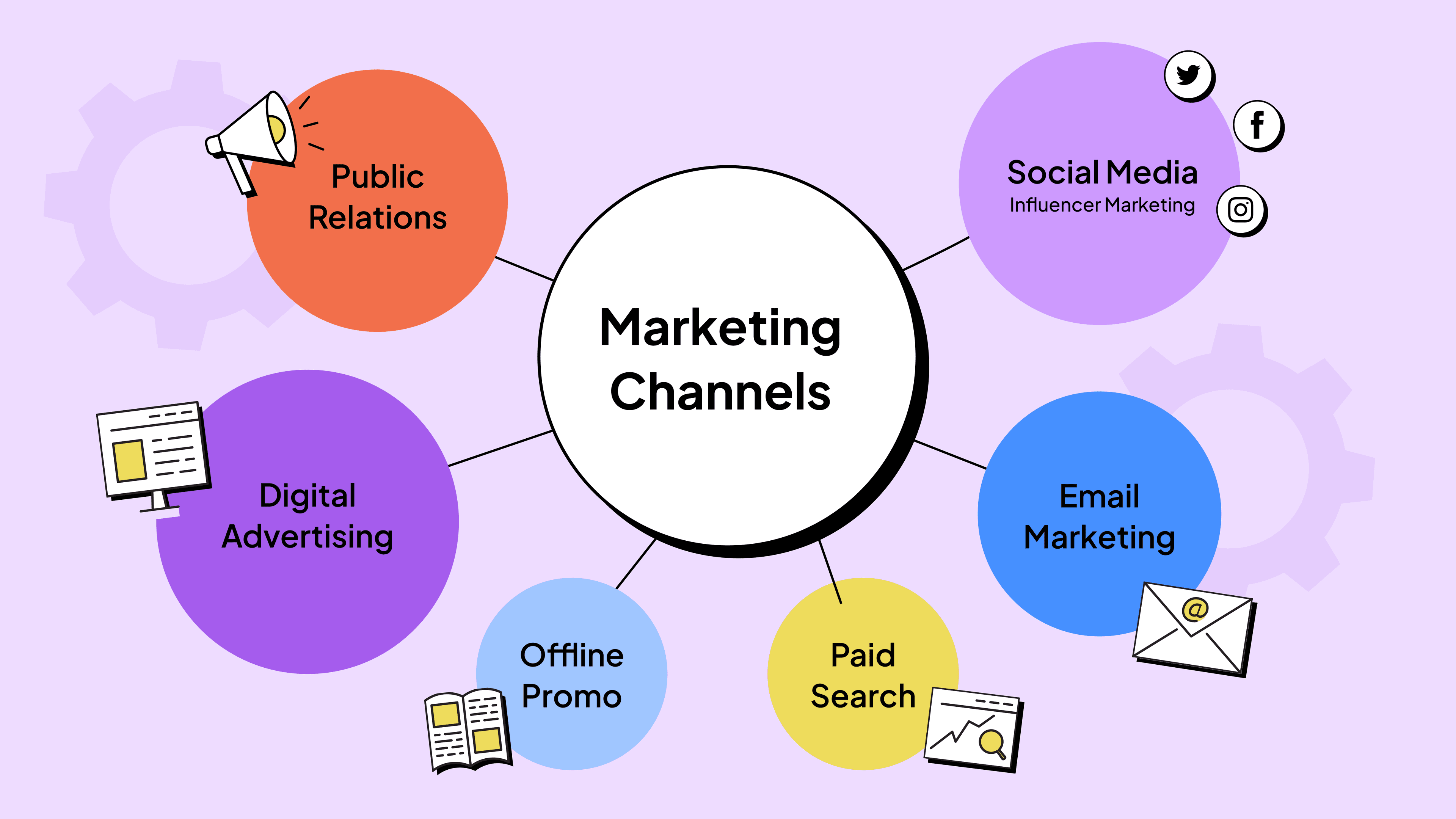Lead Gen for SaaS Companies: Strategies for Sustainable Growth

In today's digital age, the landscape of lead generation is constantly evolving, especially within the software-as-a-service (SaaS) industry. As we delve into the world of SaaS lead gen, it's imperative to understand not just the significance of generating new leads but also the strategies that ensure sustainable growth. The ability to effectively attract and convert potential customers stands as a cornerstone for success in any SaaS business. With fierce competition and an ever-changing digital environment, mastering lead gen for B2B becomes crucial, guaranteeing that your services reach the right audience at the right time.
Navigating through the maze of SaaS lead gen involves a comprehensive approach, from identifying your target audience to employing the right mix of content marketing, SEO best practices, and social media tactics. In the forthcoming sections, we'll explore the ins and outs of these methodologies, including email marketing campaigns, paid advertising tactics, and the pivotal role of measurement and analytics. By providing a roadmap of B2B lead gen strategies, our aim is to equip you with the knowledge to drive not just leads but quality leads that convert into loyal customers, fostering sustainable growth for your SaaS company.
Understanding Lead Generation for SaaS
Here is the citations content for the section "Understanding Lead Generation for SaaS" of the article "Lead Gen for SaaS Companies: Strategies for Sustainable Growth" in markdown format:
Lead generation is the process of converting organic traffic or visitors to your website into potential customers . But to convert your leads into paying customers requires a series of steps that you must effectively implement with proper timing and the correct lead generation tools .
Capturing leads is no easy task, especially with the rising market competition. Every SaaS business is vying for your audience's attention . It's important to develop strategies that offer value to a potential customer to convert them successfully .
A lead is a potential customer for your SaaS business . These are individuals or groups (your target market) that may be inclined to use or buy your products or services . They could express interest in your product or have a need to purchase your products or services .
Not all leads are good for your business. Some are worth more than others . Your ability to distinguish from different types of qualified leads could boost your business's potential for growth .
The lifetime value (LTV) refers to the potential amount of money a customer would spend on your business over your relationship . Analyzing customer lifetime value provides valuable insights into lead generation and the lead nurturing process .
The customer acquisition cost (CAC) refers to the total amount of money a company invests to acquire new customers . It is part of a company's marketing efforts to expand its clientele .
You can calculate the cost per lead by dividing the total marketing cost for a SaaS company by the total number of new leads generated . This formula helps keep your marketing efforts in check and ensures you are not spending more than your SaaS business is gaining in return .
Tracking the ROI of B2B SaaS lead generation is challenging since the sales cycle could occur for months and years . In a research conducted by Implisit, they stated that B2B SaaS companies experience a 13% conversion rate, even with warm leads . The average time converting SaaS leads is approximately 84 days or 3 months .
Identifying Your Target Audience
Identifying your target audience is a crucial step in developing effective lead generation strategies for your SaaS business. By understanding who your ideal customers are, you can tailor your marketing efforts to resonate with their specific needs, pain points, and preferences. This process involves creating buyer personas and implementing segmentation strategies to gain a deeper understanding of your target market.
Creating Buyer Personas
Buyer personas are fictional representations of your ideal customers based on real data and market research. They help you visualize and humanize your target audience, making it easier to create targeted content and messaging. When creating buyer personas for your SaaS product, consider the following factors:
- Demographics: Age, gender, location, income level, and education.
- Job title and industry: What roles do your ideal customers hold within their organizations, and in which industries do they work?
- Pain points and challenges: What problems do they face that your SaaS solution can solve?
- Goals and motivations: What drives their decision-making process, and what do they hope to achieve by using your product?
- Buying behavior: How do they research and evaluate potential solutions, and what factors influence their purchasing decisions?
By gathering this information through customer interviews, surveys, and data analysis, you can create detailed buyer personas that guide your lead generation efforts.
Segmentation Strategies
Segmentation involves dividing your target audience into smaller, more manageable groups based on shared characteristics. This allows you to deliver more personalized and relevant content, increasing the likelihood of conversion. Some common segmentation strategies for SaaS businesses include:
- Firmographic segmentation: Grouping prospects based on company size, industry, revenue, and location .
- Behavioral segmentation: Segmenting users based on their interactions with your website, product, or marketing materials, such as feature usage, engagement level, and purchase history.
- Needs-based segmentation: Categorizing prospects according to their specific needs and the benefits they seek from your SaaS solution .
- Value-based segmentation: Dividing customers based on their potential lifetime value, considering factors such as subscription tier, revenue generated, and customer acquisition cost .
By implementing these segmentation strategies, you can create targeted campaigns that address the unique needs and preferences of each segment, ultimately improving your lead generation results.
Remember, identifying your target audience is an ongoing process. As your SaaS business evolves and your customer base grows, it's essential to continually refine your buyer personas and segmentation strategies to ensure that your lead generation efforts remain effective and relevant.
Content Marketing Strategies
Content marketing is a powerful tool for SaaS companies to attract, engage, and convert their target audience. By creating valuable and informative content, businesses can establish themselves as thought leaders in their industry and build trust with potential customers. Here are some effective content marketing strategies for SaaS lead generation:
Blogging
Blogging is a cornerstone of content marketing for SaaS companies. By consistently creating high-quality blog posts that address the pain points and challenges faced by your target audience, you can attract organic traffic to your website and establish your brand as a reliable source of information . Focus on creating evergreen content that remains relevant over time, and optimize your blog posts for search engines to improve your visibility in search results.
Whitepapers and E-books
Whitepapers and e-books are in-depth, educational resources that provide comprehensive information on a specific topic related to your SaaS product or industry. These long-form content pieces are highly effective for generating leads, as they often require users to provide their contact information in exchange for access to the resource . By creating valuable whitepapers and e-books that address the needs and challenges of your target audience, you can attract qualified leads and nurture them through the sales funnel.
Webinars and Podcasts
Webinars and podcasts are engaging, interactive content formats that allow you to connect with your target audience in real-time. By hosting webinars on topics related to your SaaS product or industry, you can demonstrate your expertise, provide valuable insights, and generate leads by requiring attendees to register with their contact information . Podcasts, on the other hand, offer a more informal and conversational approach to content marketing, allowing you to build relationships with your audience and establish your brand as a thought leader in your industry.
To maximize the effectiveness of your content marketing efforts, it's essential to develop a comprehensive strategy that aligns with your overall business goals and target audience. This includes:
- Identifying your target audience and understanding their needs, challenges, and preferences
- Conducting keyword research to identify the topics and phrases that your target audience is searching for
- Creating a content calendar to ensure consistent and timely delivery of your content
- Promoting your content through various channels, such as social media, email marketing, and paid advertising
- Measuring the performance of your content marketing efforts and making data-driven decisions to optimize your strategy
By implementing these content marketing strategies and continuously refining your approach based on performance data, you can effectively generate high-quality leads for your SaaS business and drive sustainable growth.
SEO Best Practices
Here is the citations content for the section "SEO Best Practices" of the article "Lead Gen for SaaS Companies: Strategies for Sustainable Growth" in markdown format:
SEO plays a crucial role in driving organic traffic and generating leads for SaaS businesses. By optimizing your website for search engines, you can improve its visibility to potential customers and achieve sustainable growth. Let's explore some essential SEO best practices for SaaS lead generation.
Keyword Research
Keyword research is the foundation of any successful SEO strategy. It involves identifying the words and phrases that your target audience uses when searching for products or services like yours. By targeting these keywords in your website's content, you can attract more qualified leads and improve your search engine rankings.
To conduct effective keyword research for your SaaS business, follow these steps:
- Identify your target audience and understand their needs, challenges, and preferences.
- Use keyword research tools like Google Keyword Planner, Ahrefs, or SEMrush to discover relevant keywords and analyze their search volume, competition level, and potential traffic volume .
- Focus on long-tail keywords, which are more specific and less competitive than broad, generic keywords. Long-tail keywords often have higher conversion rates because they attract users with a clear intent .
- Analyze your competitors' keywords to identify opportunities for your own website and content strategy.
On-page and Off-page SEO Techniques
Once you've identified your target keywords, it's time to optimize your website's on-page and off-page elements to improve its search engine visibility and attract more leads.
On-page SEO techniques include:
- Optimizing title tags, meta descriptions, and header tags with relevant keywords
- Creating high-quality, engaging content that addresses your target audience's needs and incorporates your target keywords naturally
- Ensuring your website has a clear, user-friendly structure and navigation
- Optimizing images with descriptive file names and alt tags
- Improving your website's loading speed and mobile responsiveness
Off-page SEO techniques involve building high-quality backlinks from other reputable websites to your own. Backlinks act as "votes of confidence" from other sites, signaling to search engines that your content is valuable and trustworthy. To acquire backlinks, you can:
- Create valuable, shareable content that other websites will want to link to
- Reach out to influencers and industry publications for guest posting opportunities
- Participate in online communities and forums related to your niche
- Leverage social media to promote your content and engage with your audience
By implementing these on-page and off-page SEO techniques, you can improve your website's search engine rankings, drive more organic traffic, and generate high-quality leads for your SaaS business. Remember, SEO is an ongoing process that requires consistent effort and adaptation to stay ahead in the competitive digital landscape .
Social Media Marketing
Social media platforms have become an indispensable tool for SaaS companies to connect with their target audience, promote their products or services, and drive lead generation . With billions of active users across various platforms, social media offers a vast opportunity for SaaS businesses to increase brand visibility, engage with potential customers, and establish themselves as thought leaders in their industry .
However, to effectively leverage social media for lead generation, SaaS companies must develop a comprehensive strategy that aligns with their overall business goals and resonates with their target audience. This involves choosing the right platforms, creating compelling content, and implementing effective engagement strategies.
Choosing the Right Platforms
One of the key challenges in SaaS social media marketing is identifying the platforms that are most relevant to your target audience and business objectives. While it may be tempting to have a presence on every social media channel, spreading your resources too thin can lead to suboptimal results .
To determine the most effective social media platforms for your SaaS business, consider the following factors:
- User demographics: Analyze the user information and demographics for each platform and align them with your ideal customer profile .
- Business objectives: Understand how each platform works and how they can help you achieve your desired results, such as brand awareness, lead generation, or customer engagement .
- Competitor analysis: Look at which platforms your closest competitors are using and how they are leveraging them to inform your own strategy .
By focusing on the platforms that are most likely to reach and engage your target audience, you can maximize the impact of your social media marketing efforts.
Engagement Strategies
Once you have identified the right social media platforms for your SaaS business, the next step is to develop and implement effective engagement strategies. This involves creating valuable content, fostering community building, and leveraging paid advertising to reach a wider audience.
- Content creation: Share a mix of promotional and educational content that addresses your audience's challenges and offers valuable solutions . Use visuals, such as images, videos, and infographics, to make your content more engaging and shareable.
- Community building: Encourage user participation through interactive campaigns, such as polls, quizzes, or contests . Incorporate user-generated content to build a sense of community and authenticity around your brand.
- Paid advertising: Launch targeted paid advertising campaigns on social media platforms to reach your ideal customers based on demographics, interests, and online behavior . Track performance data closely and optimize your ad spend accordingly.
To maximize the effectiveness of your engagement strategies, it's essential to consistently monitor and analyze your social media metrics. Use tools like social media analytics to track key performance indicators (KPIs) and gain insights into your audience's behavior and preferences . Regularly review and adjust your strategy based on this data to ensure continuous improvement and better results.
By implementing these engagement strategies and leveraging the power of social media, SaaS companies can effectively generate high-quality leads, build brand awareness, and foster long-term customer relationships. However, it's important to remember that social media marketing is an ongoing process that requires consistent effort, creativity, and adaptation to stay ahead in the competitive digital landscape.
Email Marketing Campaigns
Email marketing campaigns are a powerful tool for SaaS lead generation, allowing you to nurture leads and build relationships with potential customers. By crafting targeted, personalized emails that deliver value and address your audience's pain points, you can effectively guide them through the sales funnel and convert them into paying customers.
Building Email Lists
To launch successful email marketing campaigns, you first need to build a high-quality email list. Here are some strategies for growing your subscriber base:
- Offer valuable lead magnets, such as ebooks, whitepapers, or exclusive content, in exchange for email addresses .
- Create engaging opt-in forms and strategically place them on your website, such as in pop-ups, sidebars, or at the end of blog posts .
- Leverage social media to promote your email newsletter and encourage signups .
- Implement referral programs that incentivize existing subscribers to refer their friends and colleagues .
- Collect email addresses at offline events, such as conferences or trade shows .
Remember to always provide value and clearly communicate the benefits of subscribing to your email list. By consistently delivering high-quality content, you'll build trust and establish your brand as a thought leader in your industry.
Automated Email Sequences
Once you've built your email list, it's time to create automated email sequences that nurture leads and guide them towards a purchase decision. Here are some best practices for crafting effective email sequences:
- Segment your email list based on factors such as demographics, behavior, or interests, allowing you to deliver more targeted and relevant content .
- Create a welcome series that introduces new subscribers to your brand, sets expectations, and provides immediate value .
- Develop a lead nurturing sequence that educates subscribers about your product, addresses common objections, and showcases customer success stories .
- Implement trigger-based emails that respond to specific actions, such as abandoning a cart or engaging with a particular piece of content .
- Personalize your emails with dynamic content, such as the subscriber's name or company, to create a more engaging and relevant experience .
Email Sequence
Purpose
Key Elements
Welcome Series
Introduce new subscribers to your brand and set expectations
- Brand story
- Value proposition
- Clear next steps
Lead Nurturing
Educate subscribers and guide them towards a purchase decision
- Educational content
- Customer success stories
- Clear calls-to-action
Trigger-Based
Respond to specific subscriber actions and behaviors
- Personalized content
- Timely delivery
- Relevant offers
By creating a mix of automated email sequences that deliver value and guide subscribers through the sales funnel, you can effectively nurture leads and drive conversions for your SaaS business. Remember to continually test and optimize your email campaigns based on performance data to ensure maximum impact and ROI.
Paid Advertising Tactics
Paid advertising is a powerful tool for SaaS companies to generate high-quality leads and drive sustainable growth. By leveraging platforms like Google Ads and social media advertising, businesses can reach their target audience effectively and efficiently. Let's explore some key paid advertising tactics that can help boost your SaaS lead generation efforts.
Google Ads
Google Ads is an essential platform for SaaS companies looking to capture high-intent traffic. By targeting relevant keywords and creating compelling ad copy, you can attract potential customers who are actively searching for solutions like yours. Here are some best practices for running successful Google Ads campaigns:
- Conduct thorough keyword research to identify high-intent, relevant keywords that align with your target audience's search behavior .
- Create ad groups based on specific themes or product features to ensure targeted messaging and higher relevance .
- Implement smart naming conventions for your campaigns and ad groups to improve organization and efficiency .
- Start with manual bidding to gather data and insights before experimenting with automated bidding strategies .
- Set up offline conversion tracking to measure the impact of your ads on key metrics like MQLs, SQLs, and deals closed won .
Social Media Ads
Social media platforms like LinkedIn, Facebook, and Twitter offer powerful advertising options for SaaS companies. By targeting specific demographics, interests, and behaviors, you can reach your ideal customer profile and drive qualified leads. Consider these strategies when running social media ads:
- Choose the right platform based on your target audience and business objectives. For example, LinkedIn is ideal for B2B SaaS companies, while Facebook and Instagram are better suited for B2C audiences .
- Create engaging ad creative that showcases your product's value proposition and addresses your audience's pain points .
- Leverage retargeting to reach users who have previously interacted with your website or social media profiles .
- Experiment with different ad formats, such as video, carousel, and lead generation forms, to find what resonates best with your audience .
Retargeting
Retargeting is a powerful tactic that allows you to reach users who have already shown interest in your SaaS product. By targeting website visitors, free trial users, and even churned customers, you can bring them back into your sales funnel and increase conversions. Here are some retargeting strategies to consider:
- Set up tracking pixels on your website to capture visitor data and create retargeting audiences .
- Segment your retargeting campaigns based on user behavior, such as website visitors, free trial users, and churned customers .
- Create personalized ad messaging that addresses the specific needs and concerns of each audience segment .
- Use retargeting to upsell and cross-sell to existing customers, highlighting new features or complementary products .
Platform
Pros
Cons
Google Ads
Vast reach, advanced targeting, performance analytics
Complex interface, high cost for competitive keywords
Facebook Ads
Huge user base, detailed segmentation, visual engagement
Ad approval process, decreasing organic reach
LinkedIn Ads
B2B focus, detailed targeting, professional audience
, niche audience
By implementing these paid advertising tactics and continually optimizing your campaigns based on data and insights, you can effectively drive high-quality leads and achieve sustainable growth for your SaaS business. Remember to align your paid efforts with your overall marketing strategy and sales funnel to maximize their impact and ROI.
Measurement and Analytics
Measurement and analytics are crucial for SaaS companies to track their lead generation efforts and make data-driven decisions. By monitoring key metrics and utilizing the right tools, businesses can gain valuable insights into their performance and identify areas for improvement.
Key Metrics to Track
To effectively measure the success of your SaaS lead generation strategies, it's essential to track the following key metrics:
- Monthly Recurring Revenue (MRR): MRR is calculated by multiplying the average revenue per account by the number of accounts in a given month . It helps you understand whether your product marketing efforts are driving growth.
- Annual Recurring Revenue (ARR): Similar to MRR, ARR considers a yearly interval instead of a monthly one . Tracking both MRR and ARR allows you to assess the sustainability of your results.
- Customer Lifetime Value (CLV or LTV): CLV represents the amount of money a business earns from one customer over the duration of their relationship . It can be calculated by dividing your average revenue per account by your churn rate.
- Customer Acquisition Cost (CAC): CAC shows exactly how much it costs to acquire new customers and the value they bring to your business . When combined with CLV, this metric helps ensure the viability of your business model.
- Churn Rate: Churn rate measures the percentage of customers that stop doing business with your company over a set period . Minimizing churn is crucial for sustainable growth.
Tools and Software for Analytics
To effectively track and analyze your SaaS metrics, consider using the following tools and software:
- Woopra: Designed for easy integration, Woopra allows you to fully understand the total customer experience across all touchpoints . It offers journey reports, subscription analytics, and automation triggers.
- Amplitude: Amplitude provides in-depth, real-time insights into product usage and customer behavior . Its features include user segmentation, funnel analysis, and retention analysis.
- Mixpanel: Mixpanel is a powerful product analytics tool that supports both mobile and web apps . It enables you to track and analyze in-app product engagement without using SQL.
- ProfitWell: ProfitWell is a SaaS analytics tool that allows you to track your revenue, user growth, and common SaaS metrics . Its advanced AI software helps you gain accurate revenue recognition and reduce churn rates.
By leveraging these tools and focusing on the key metrics mentioned above, SaaS companies can make informed decisions to optimize their lead generation strategies and drive sustainable growth. Remember, continuous monitoring and analysis are essential for staying ahead in the competitive SaaS landscape.
Conclusion
Throughout this exploration of lead generation strategies for SaaS companies, we've navigated the intricacies of attracting and converting quality leads into loyal customers, underscoring the pivotal role of tailored content marketing, SEO optimization, and the strategic use of social media and email marketing campaigns. We've highlighted the necessity of understanding your audience deeply—down to their most pressing pain points and preferences—to align your offerings precisely with their needs, thereby fostering sustainable growth. This journey has not only provided a comprehensive roadmap for effective B2B lead gen strategies but also emphasized the importance of measurement and analytics in refining and perfecting these approaches over time.
The significance of adopting a multifaceted approach—incorporating everything from detailed keyword research and engaging content creation to sophisticated email sequences and judiciously planned paid advertising—is paramount in a landscape as competitive as the SaaS industry. By diligently applying these proven strategies, businesses can look forward to not just an increase in leads but a growth in high-quality, high-conversion leads that propel their company forward. As we conclude, it's clear that the continuous evolution in digital marketing demands that SaaS companies remain agile, always ready to adapt their strategies to meet their customers where they are, ensuring a path of ongoing growth and success in the digital age.
FAQs
What are the four essential components of a lead generation strategy?The four essential components, often referred to as the 4 L's of a lead generation marketing strategy, include lead capture, landing pages, lead magnets, and lead scoring. These elements help structure a comprehensive lead generation approach.
What methods can be used to generate leads for SaaS sales?Several effective strategies for generating leads in SaaS sales include cold email outreach, social selling, SEO and content marketing, paid advertising, hosting webinars, showcasing case studies and testimonials, implementing affiliate and referral programs, and offering free trials.
What are some effective lead generation strategies?Effective strategies for generating sales leads encompass asking for referrals, conducting customer care calls, nurturing existing leads, providing reliable information via the internet and social media, engaging in online networking, and participating in in-person networking events.
What strategies are involved in demand generation for SaaS?Demand generation in the SaaS sector involves a deep understanding of your target audience and addressing their needs compellingly. Key strategies include creating insightful content marketing, optimizing SEO, and executing precisely targeted advertising campaigns.



